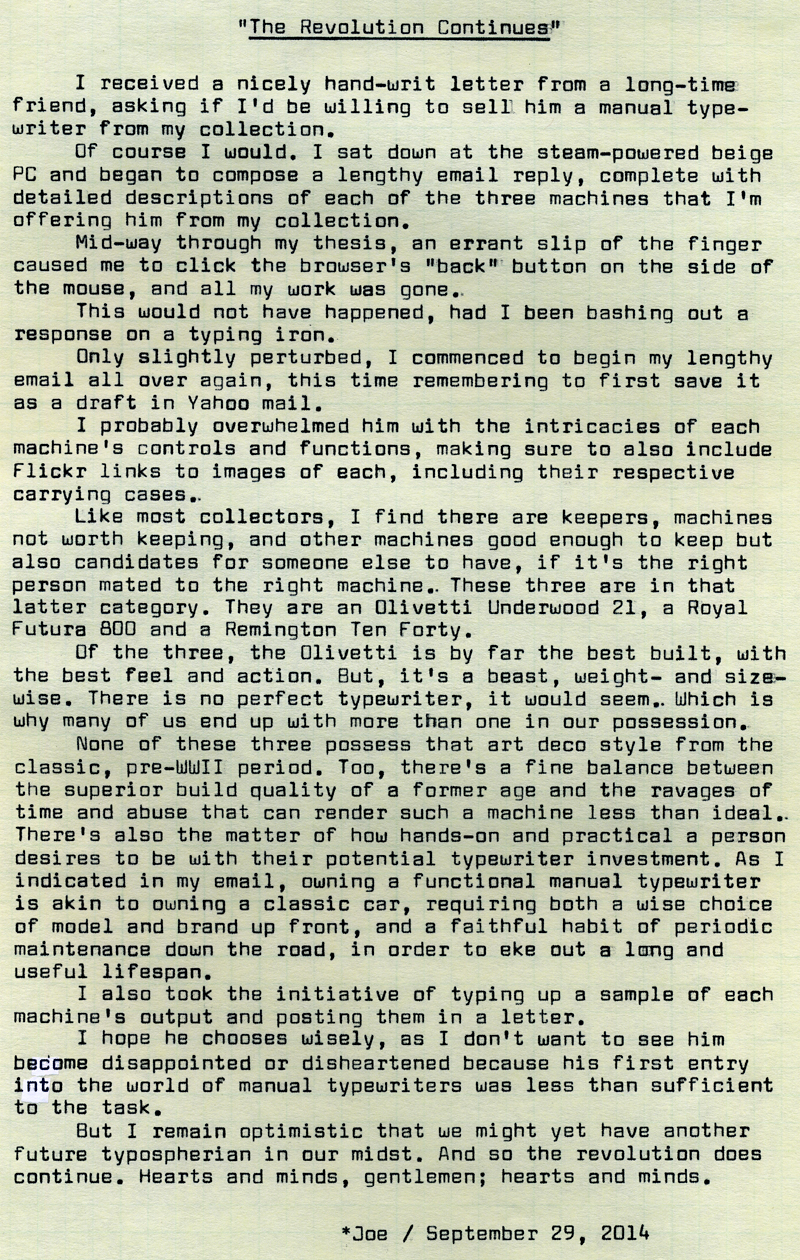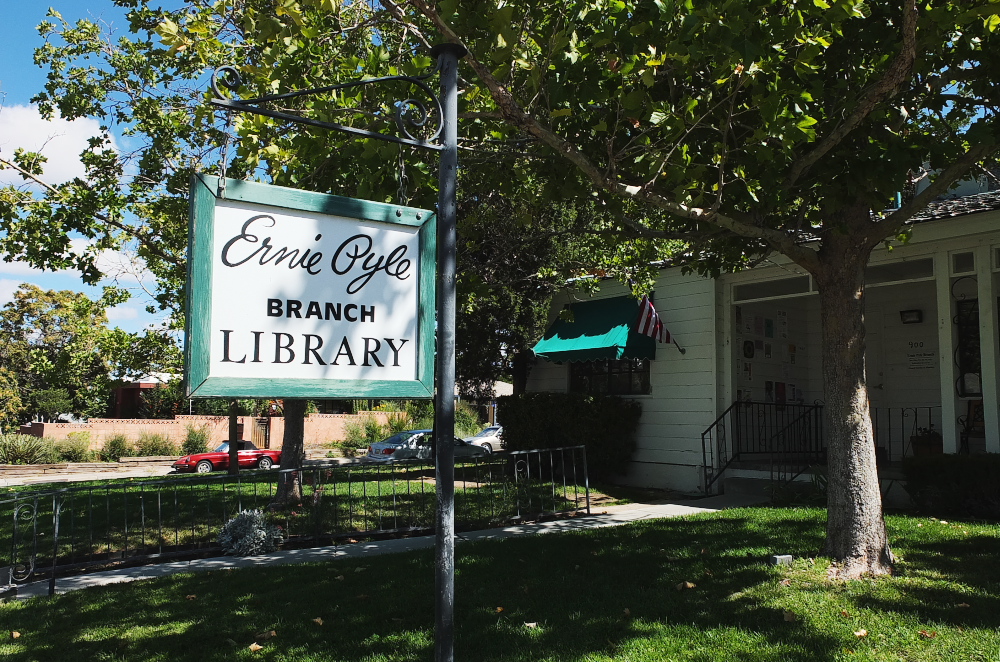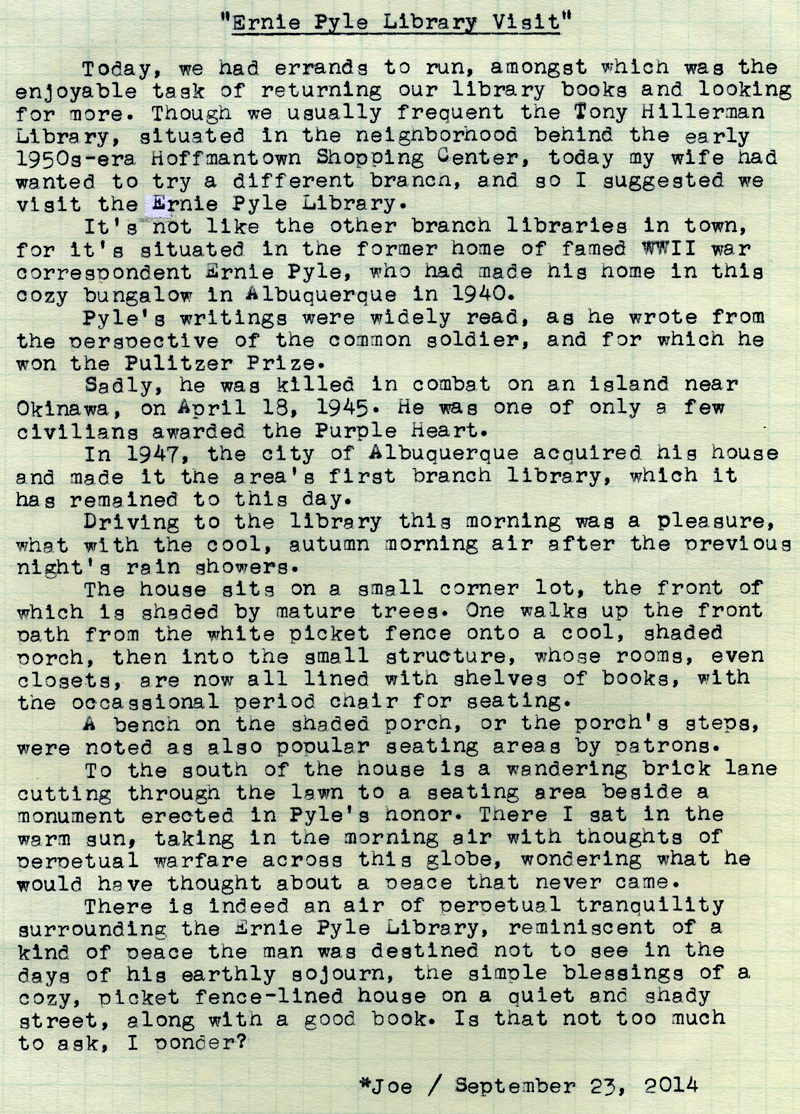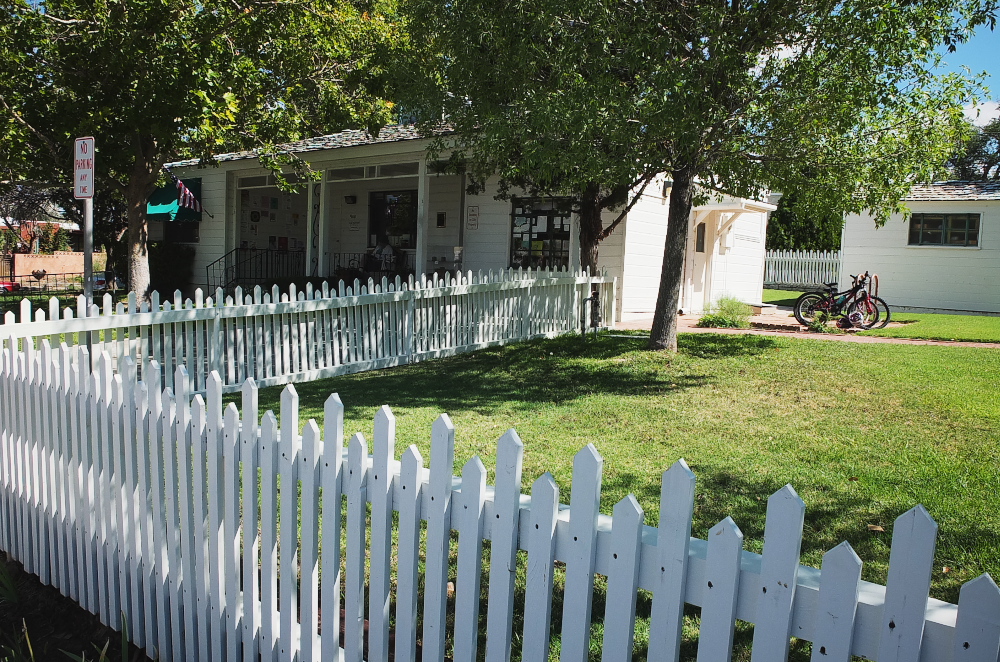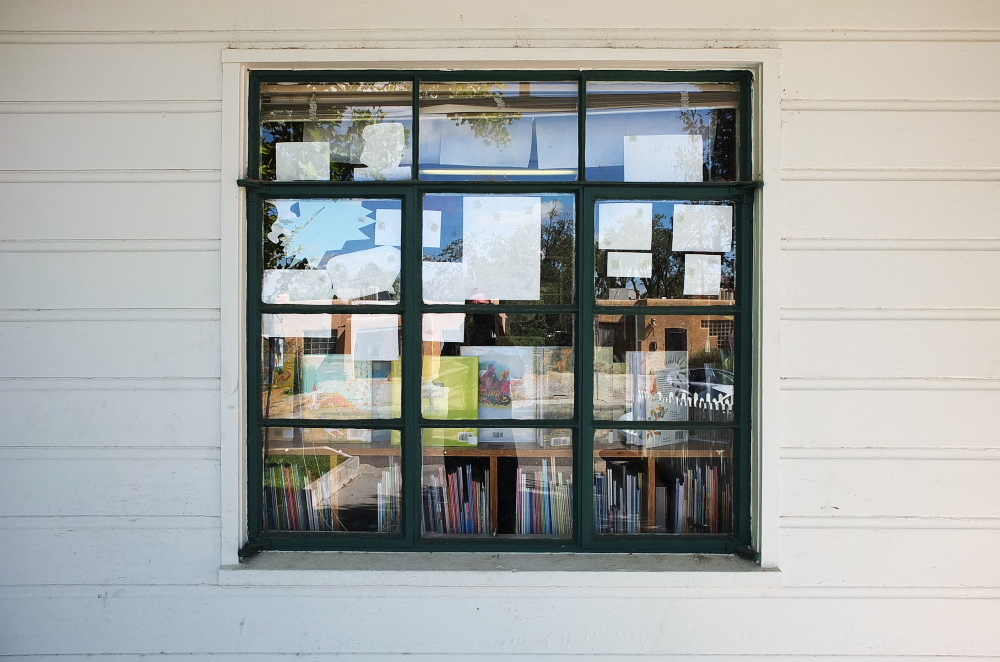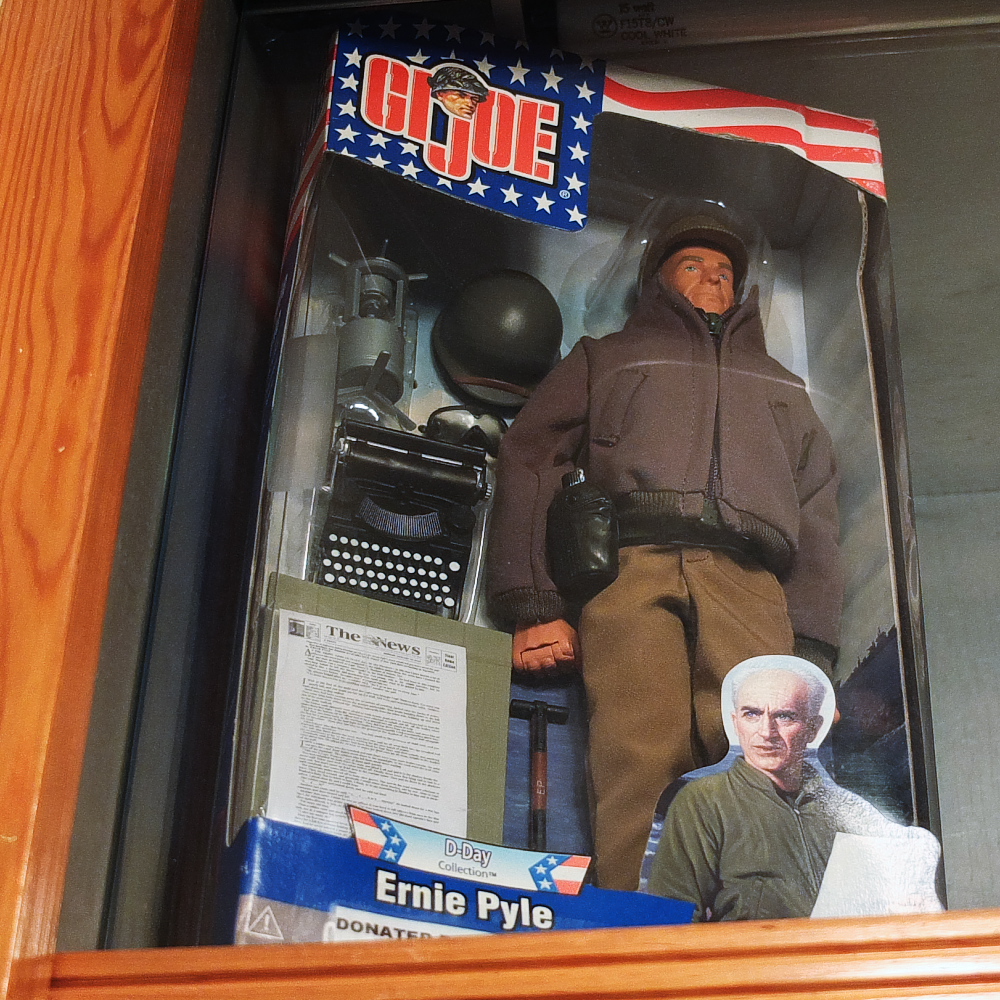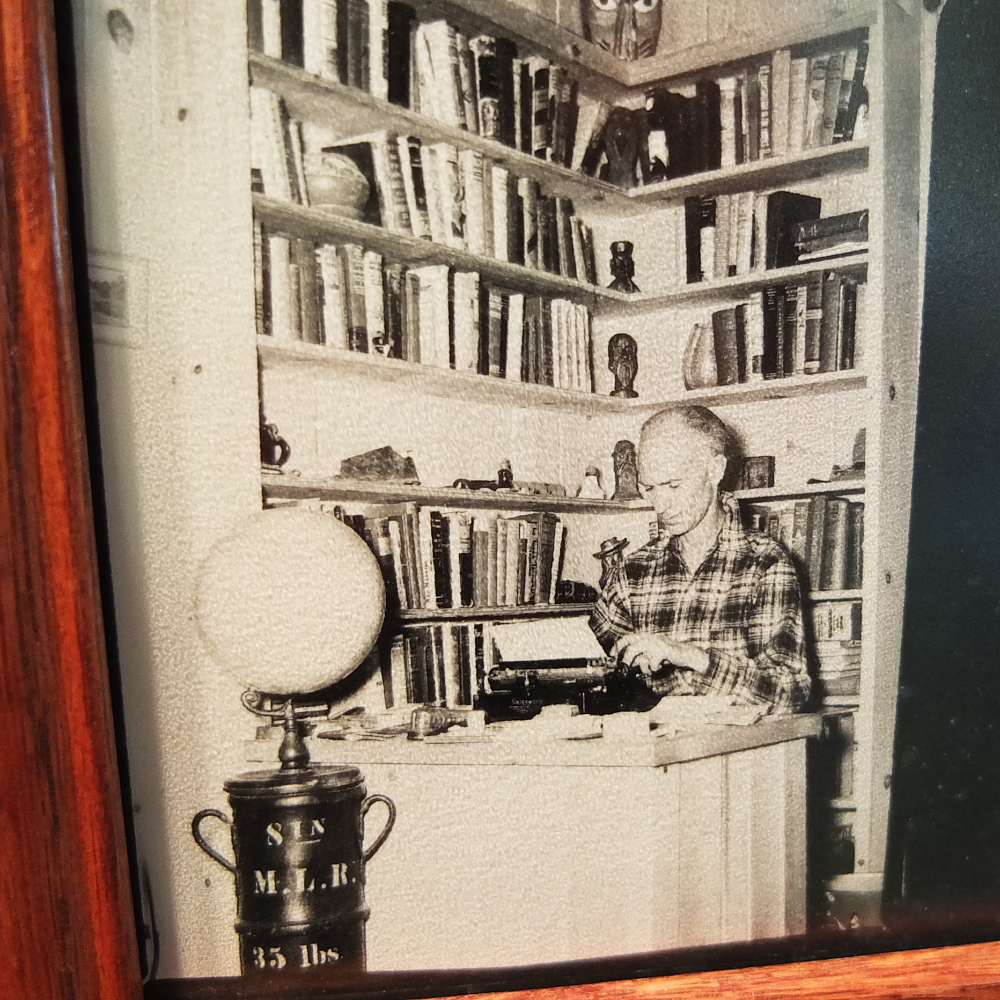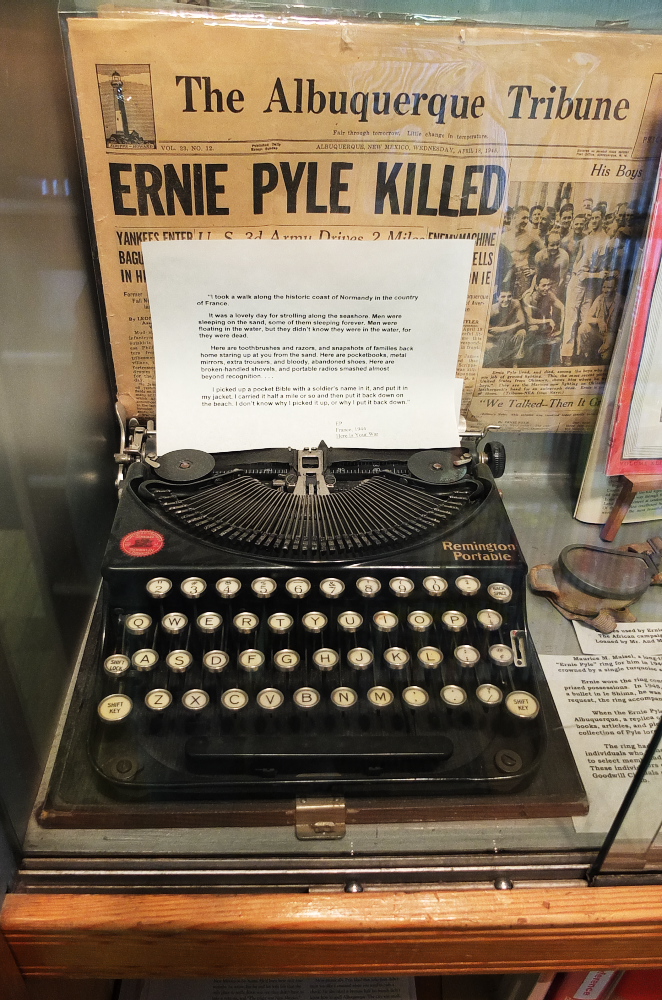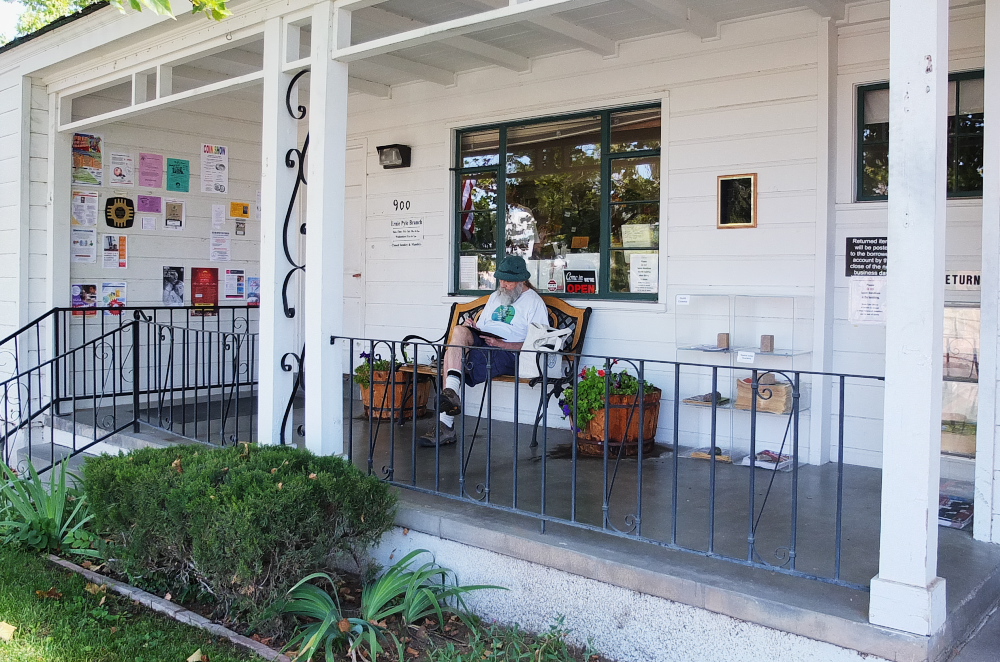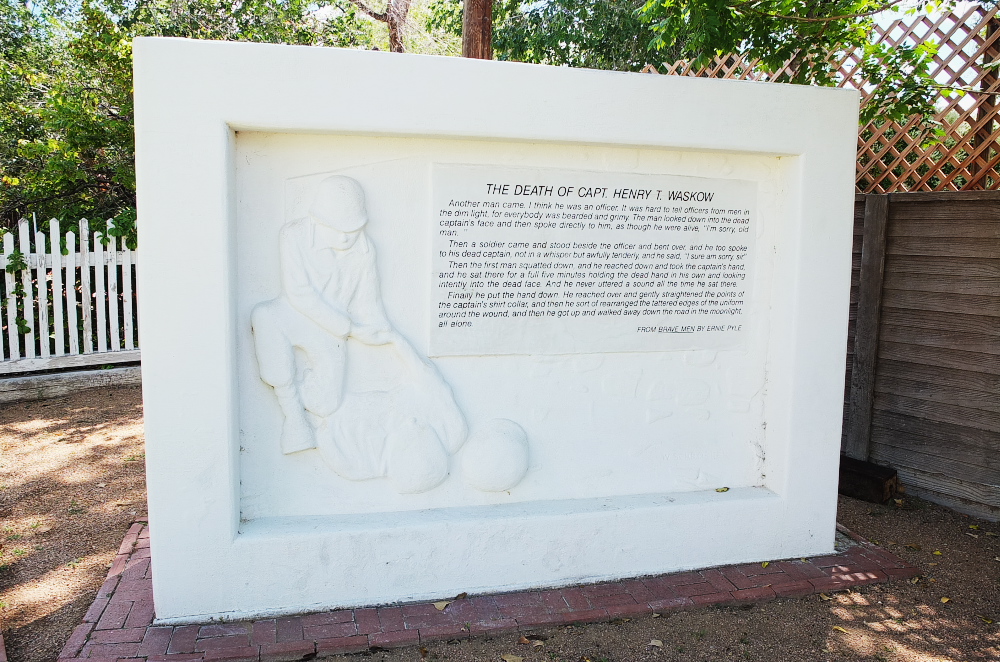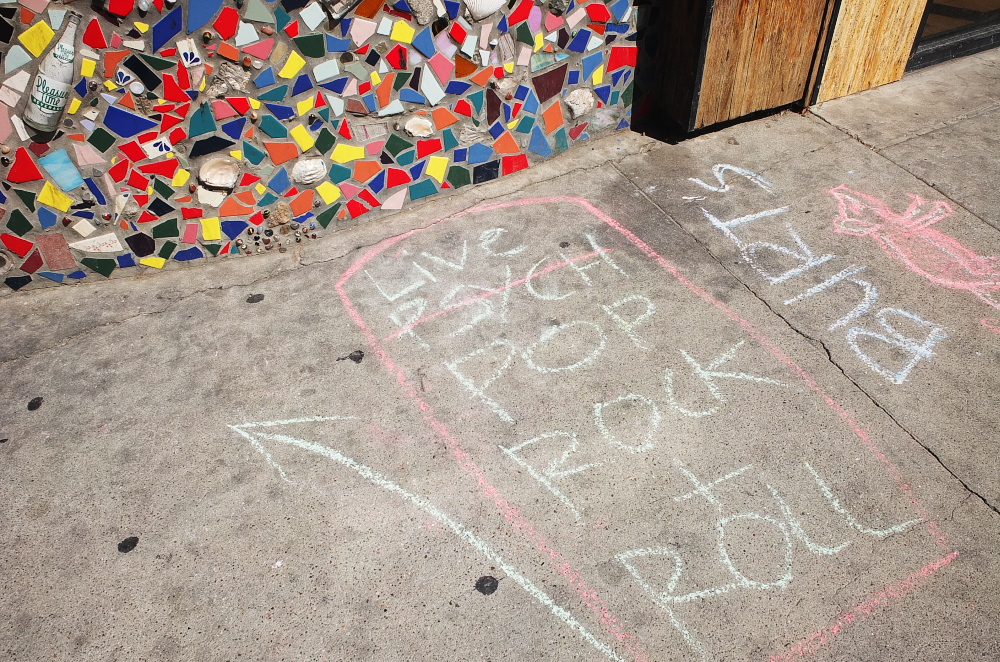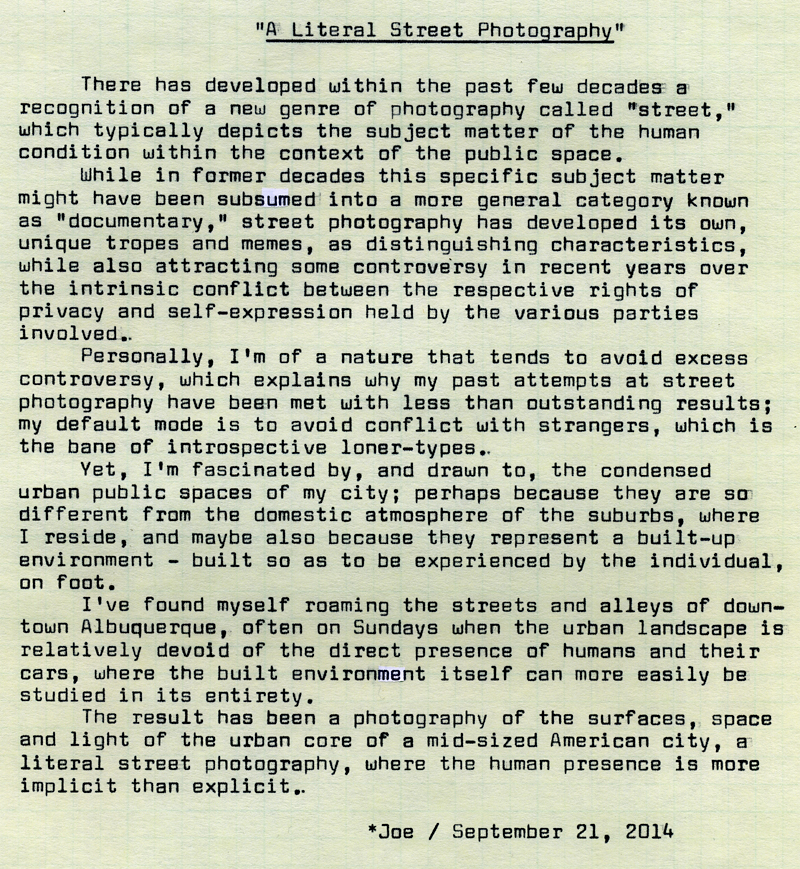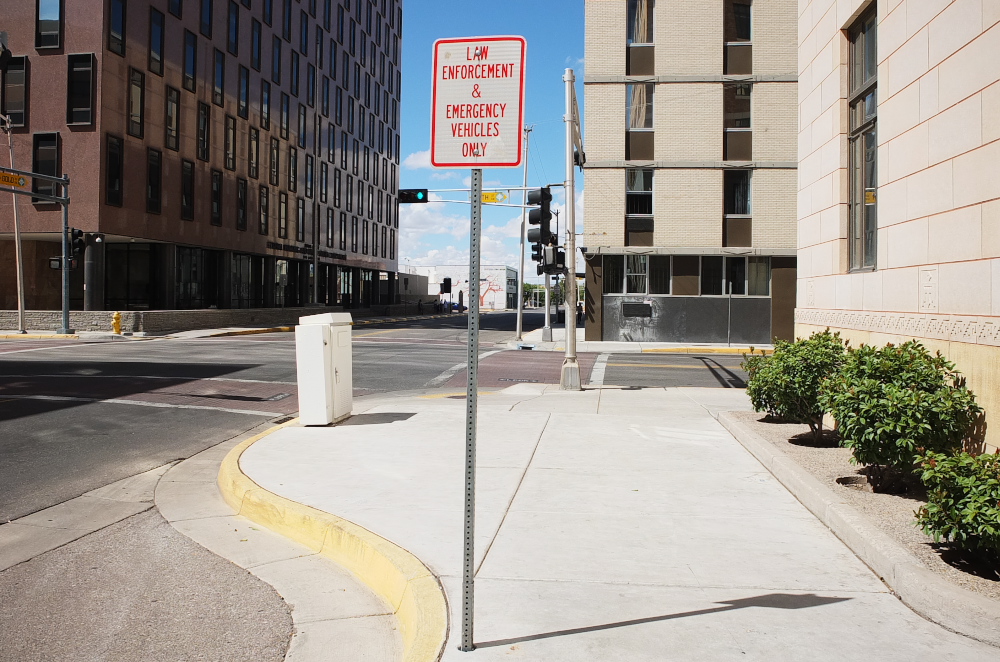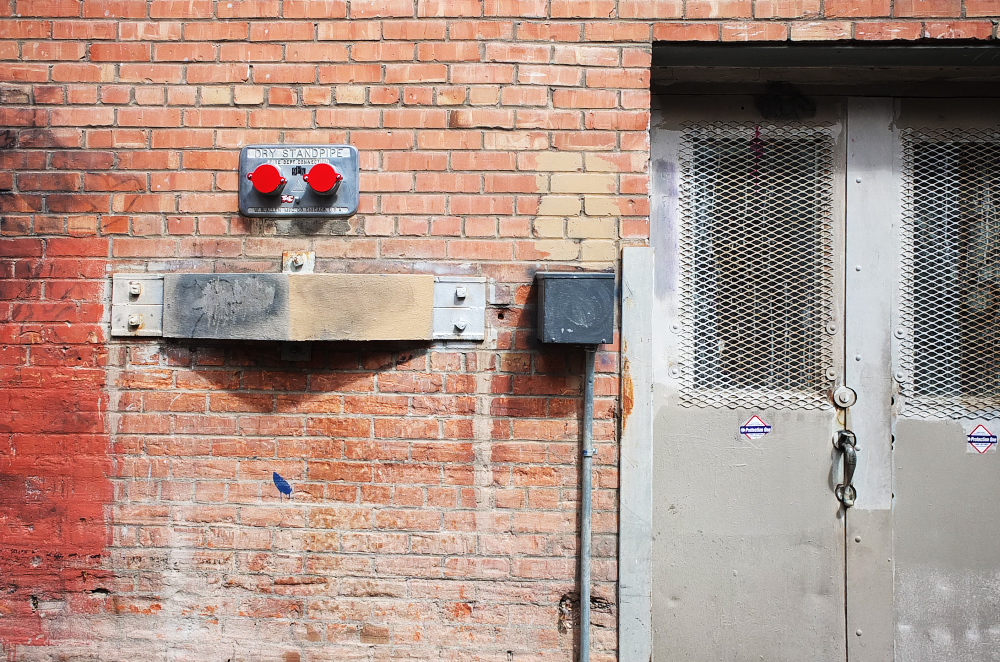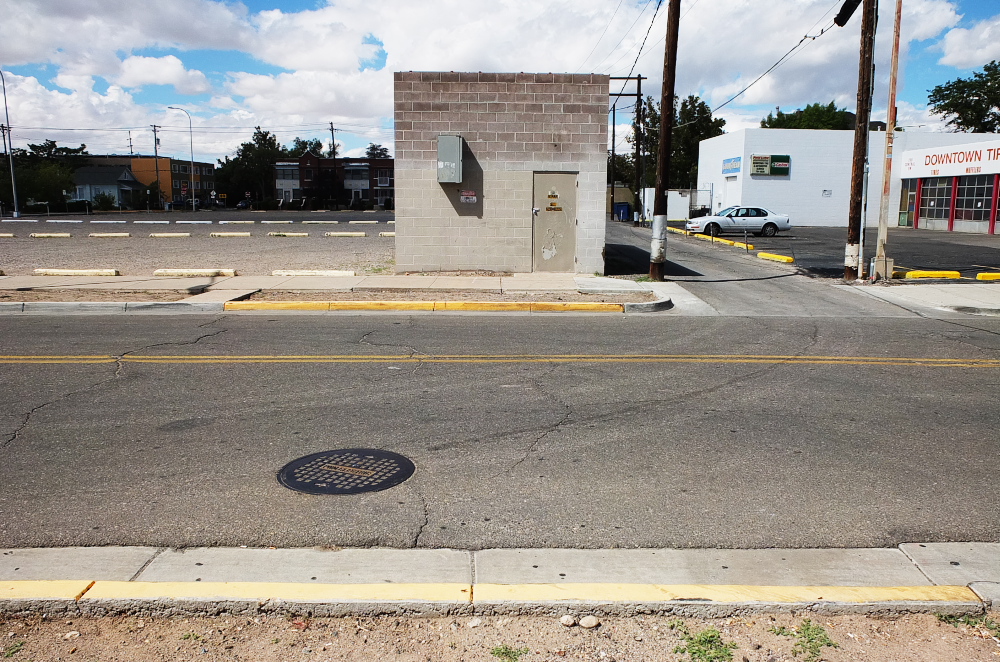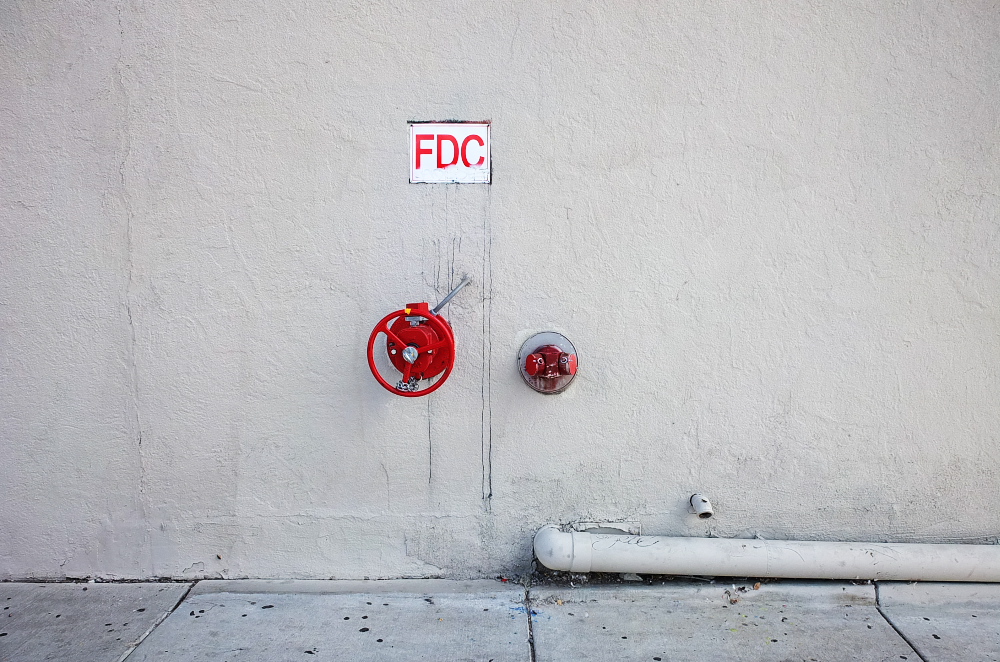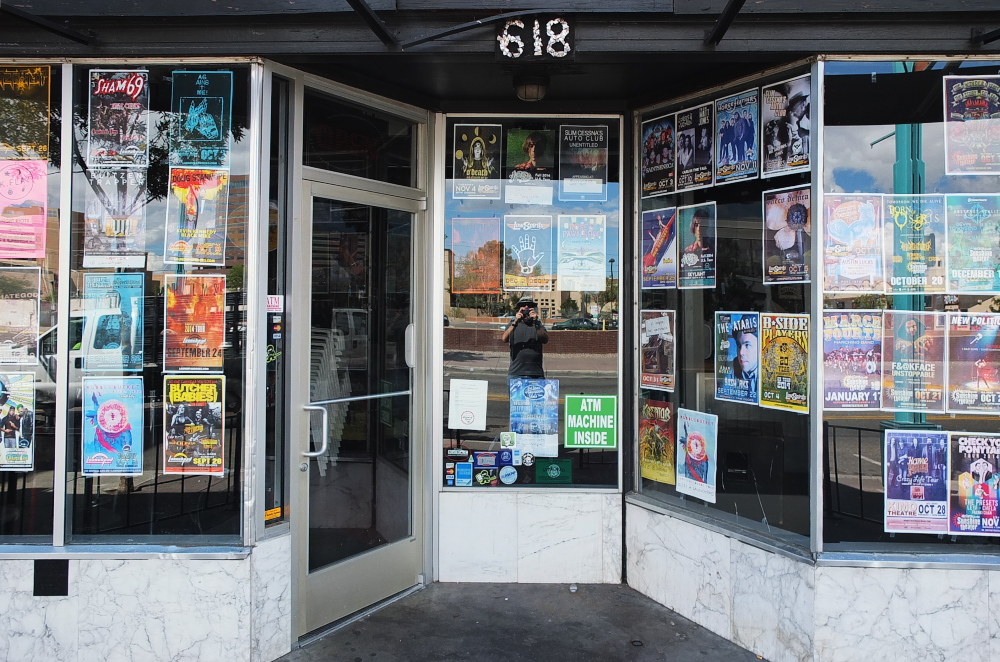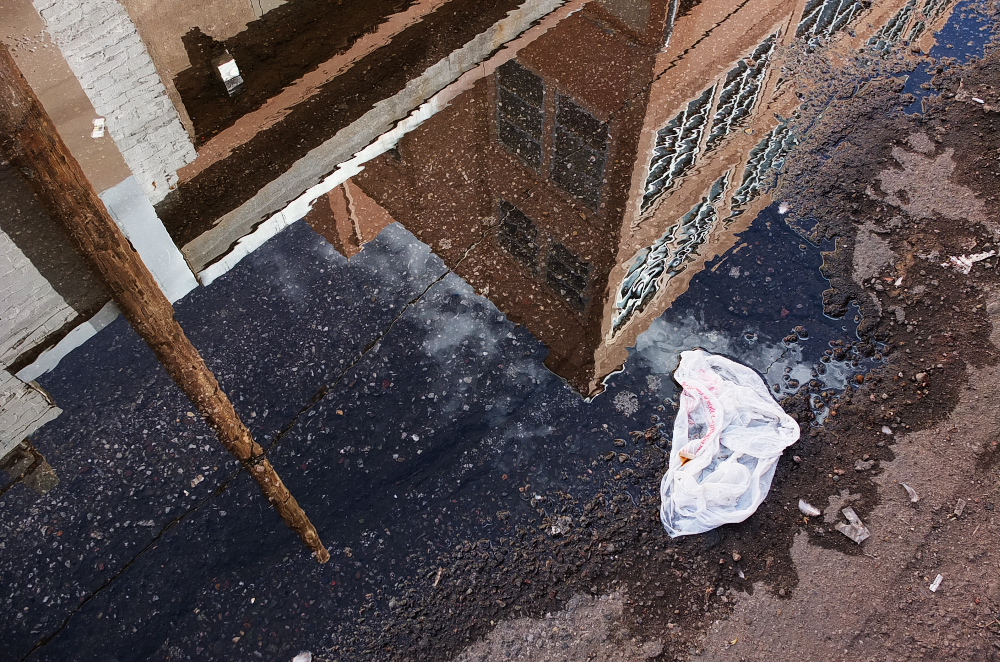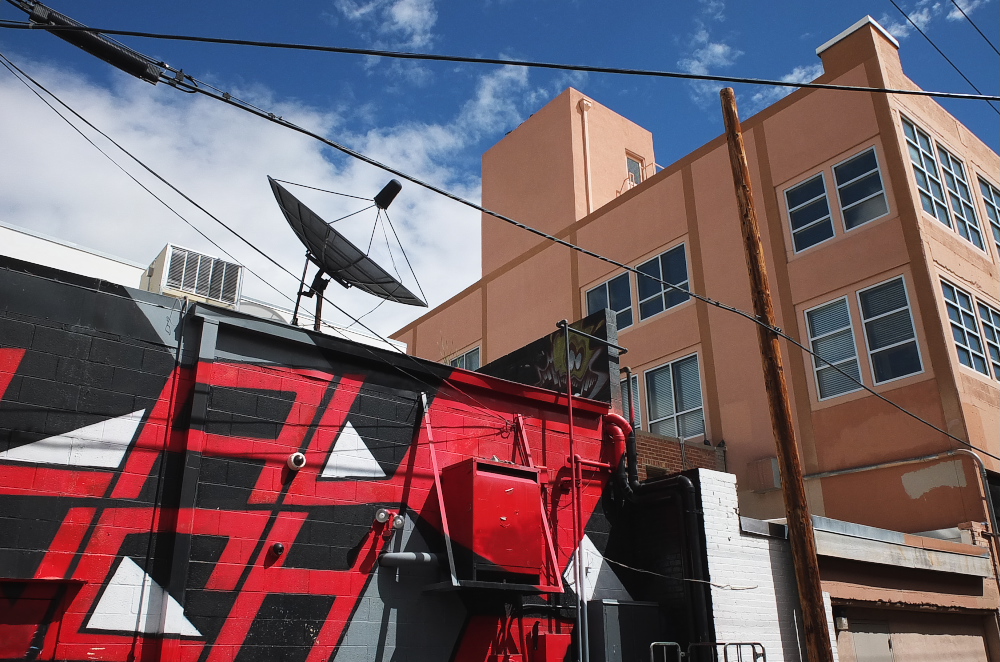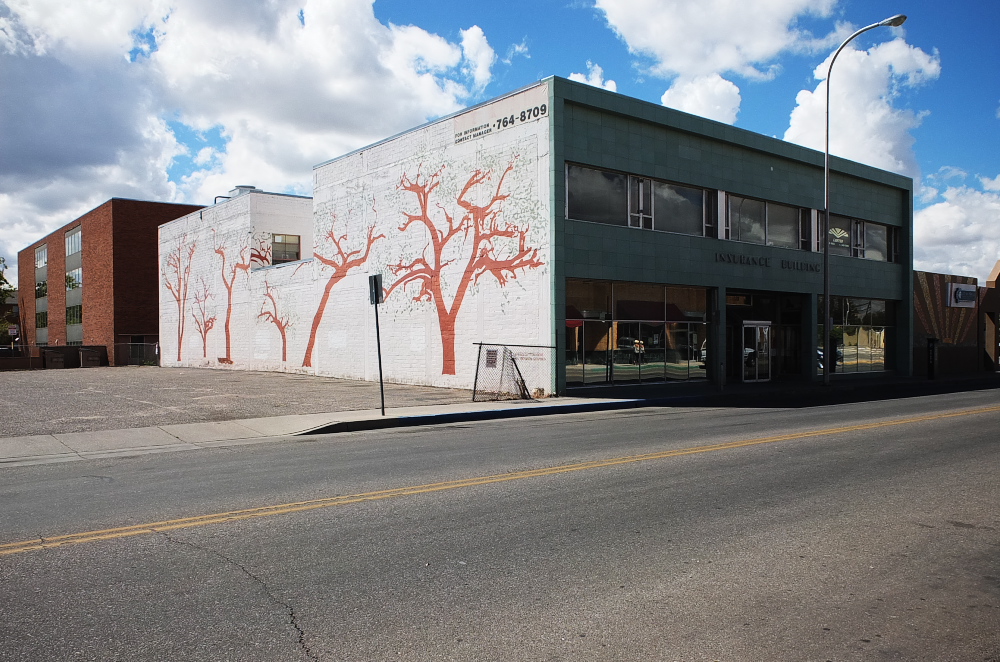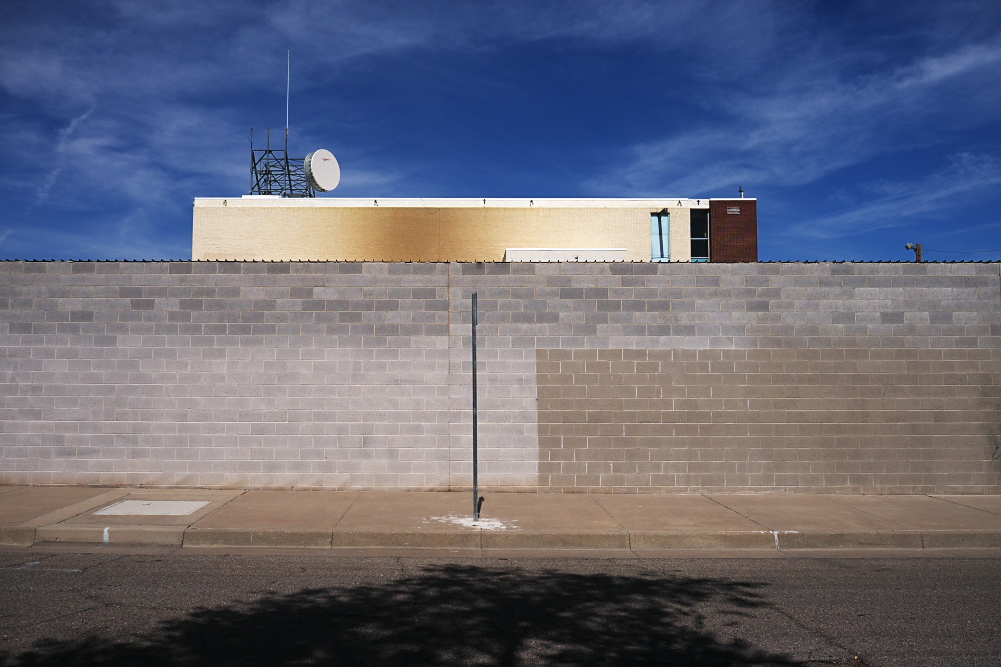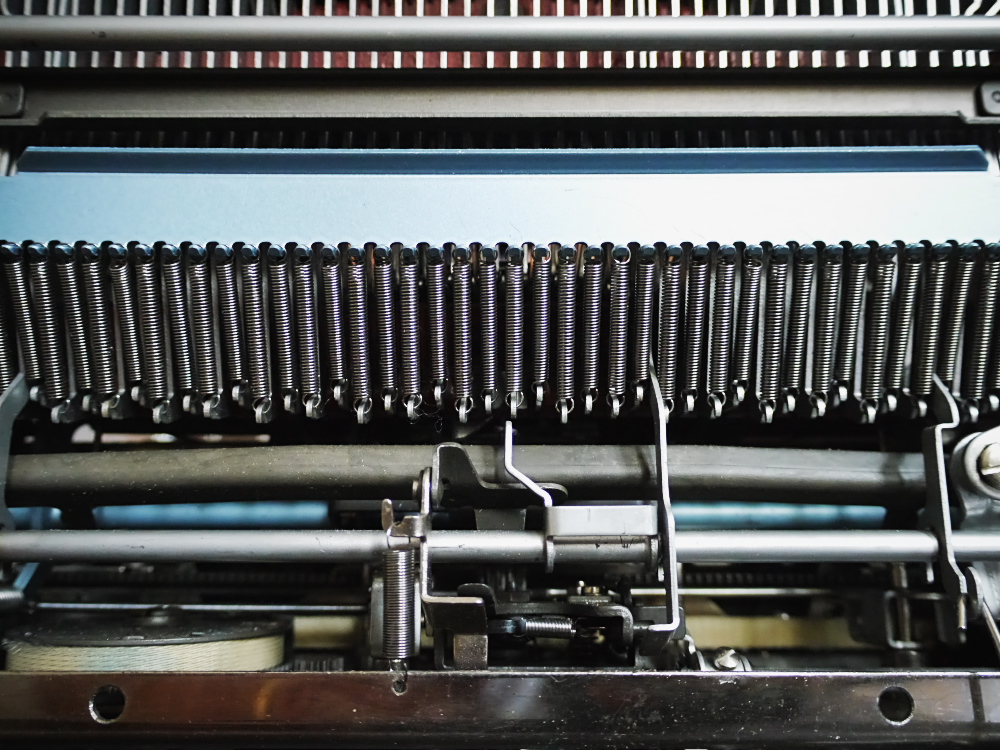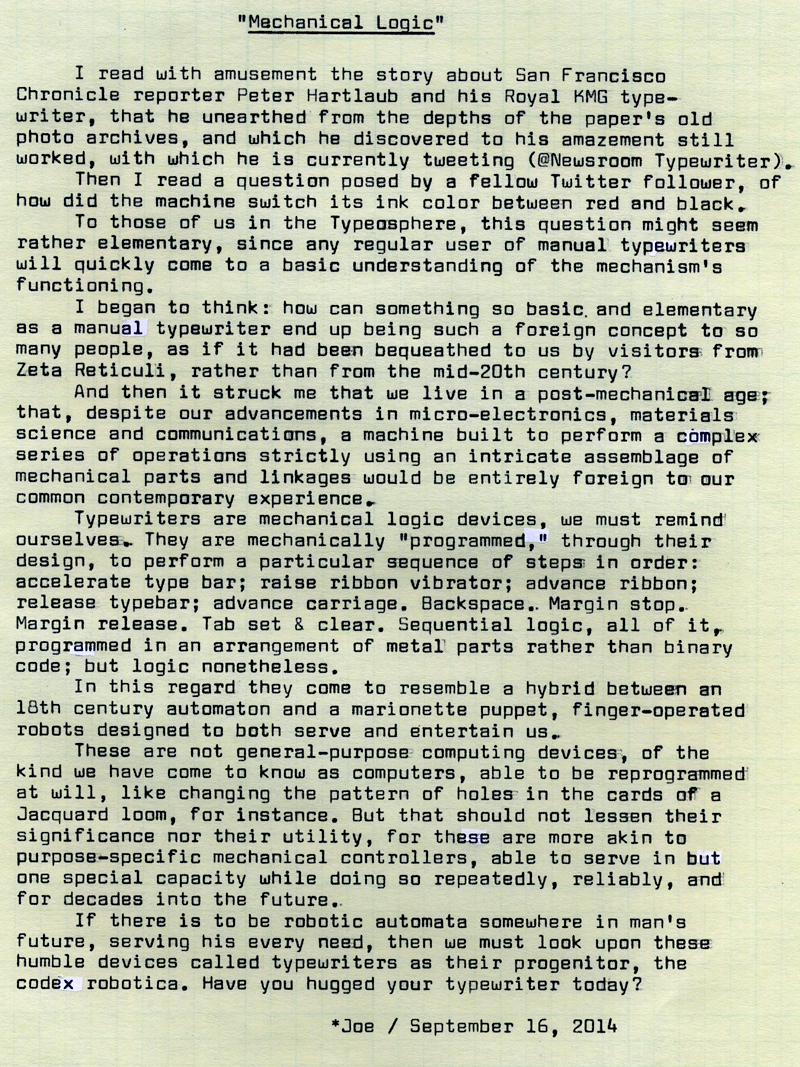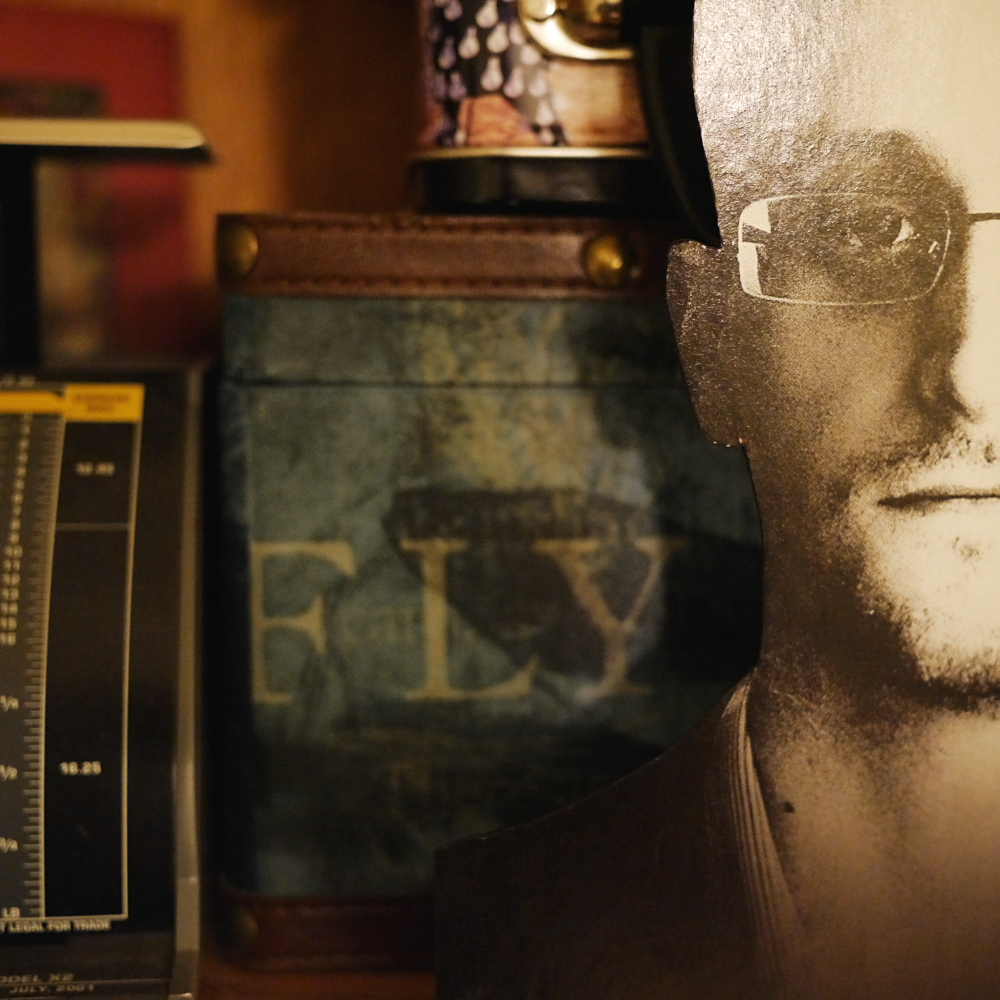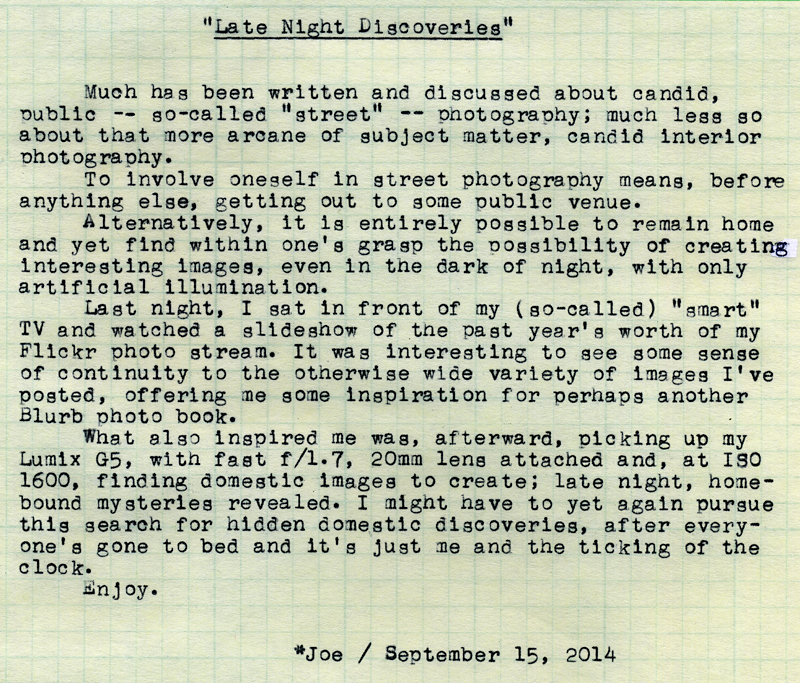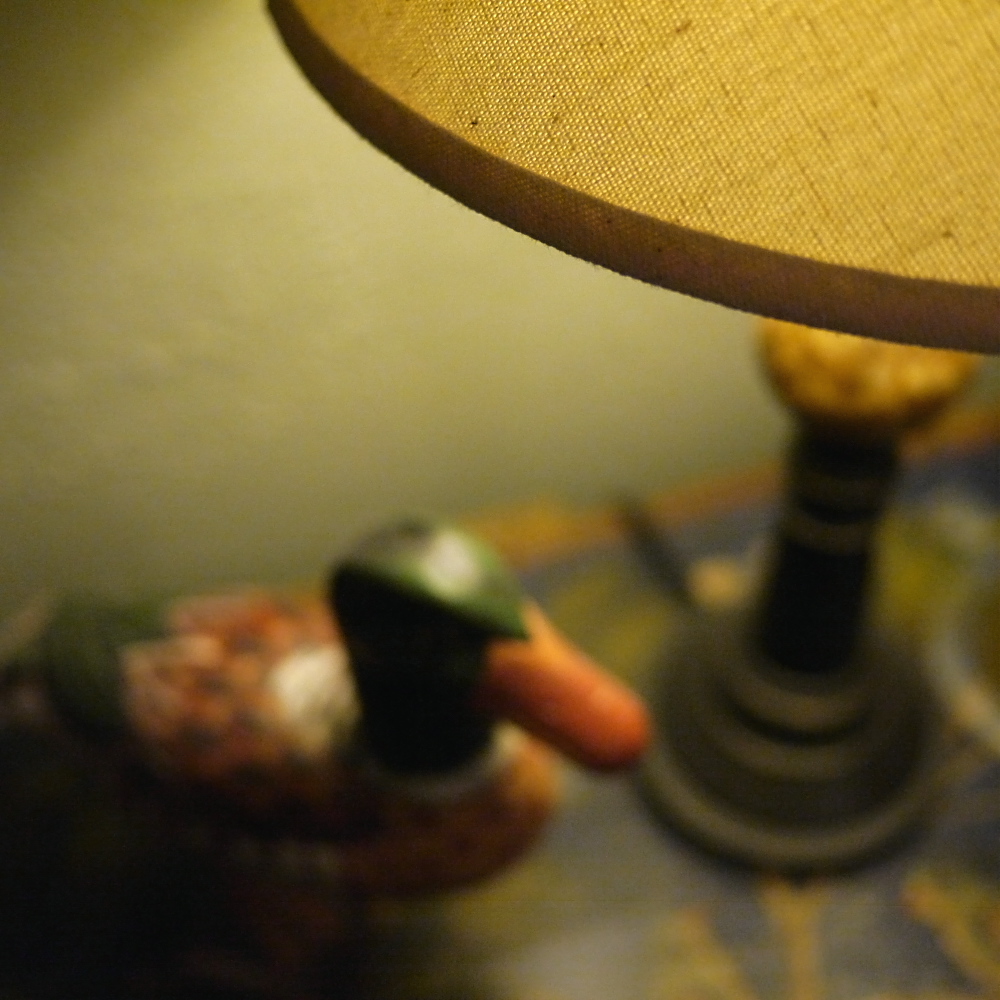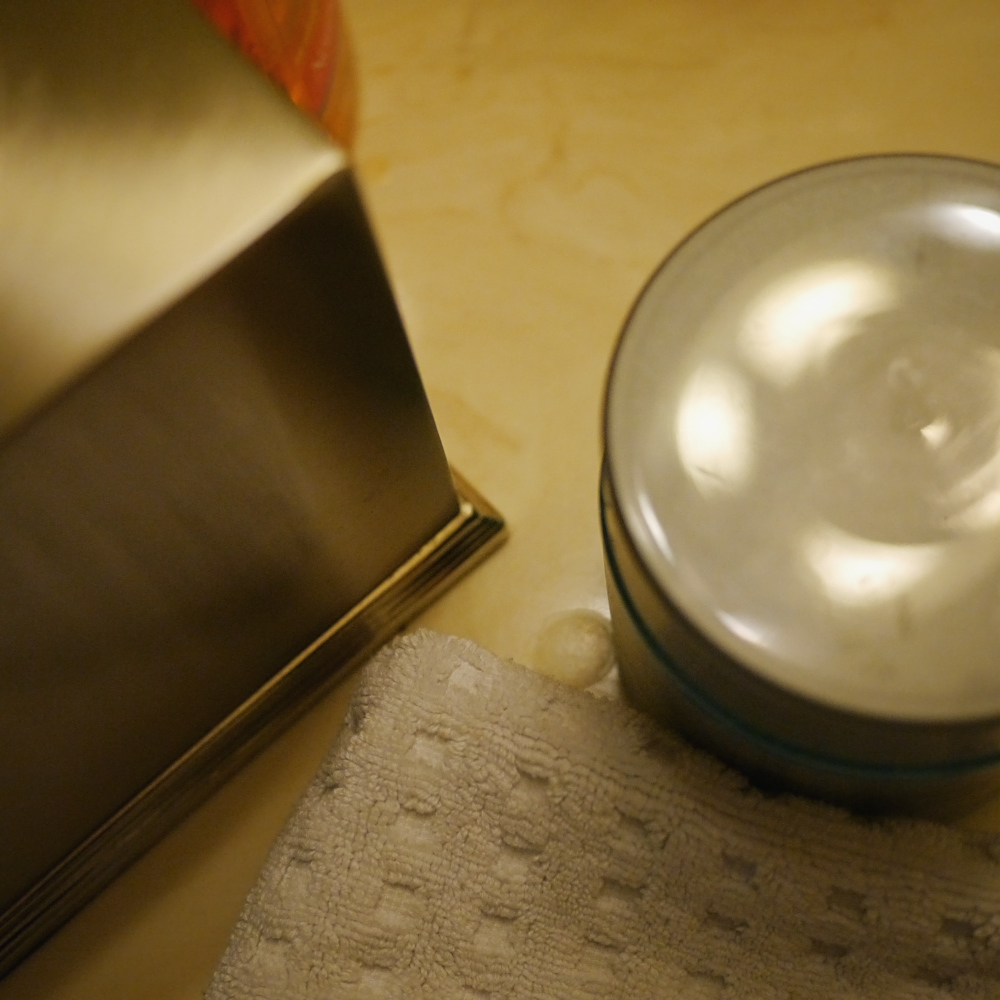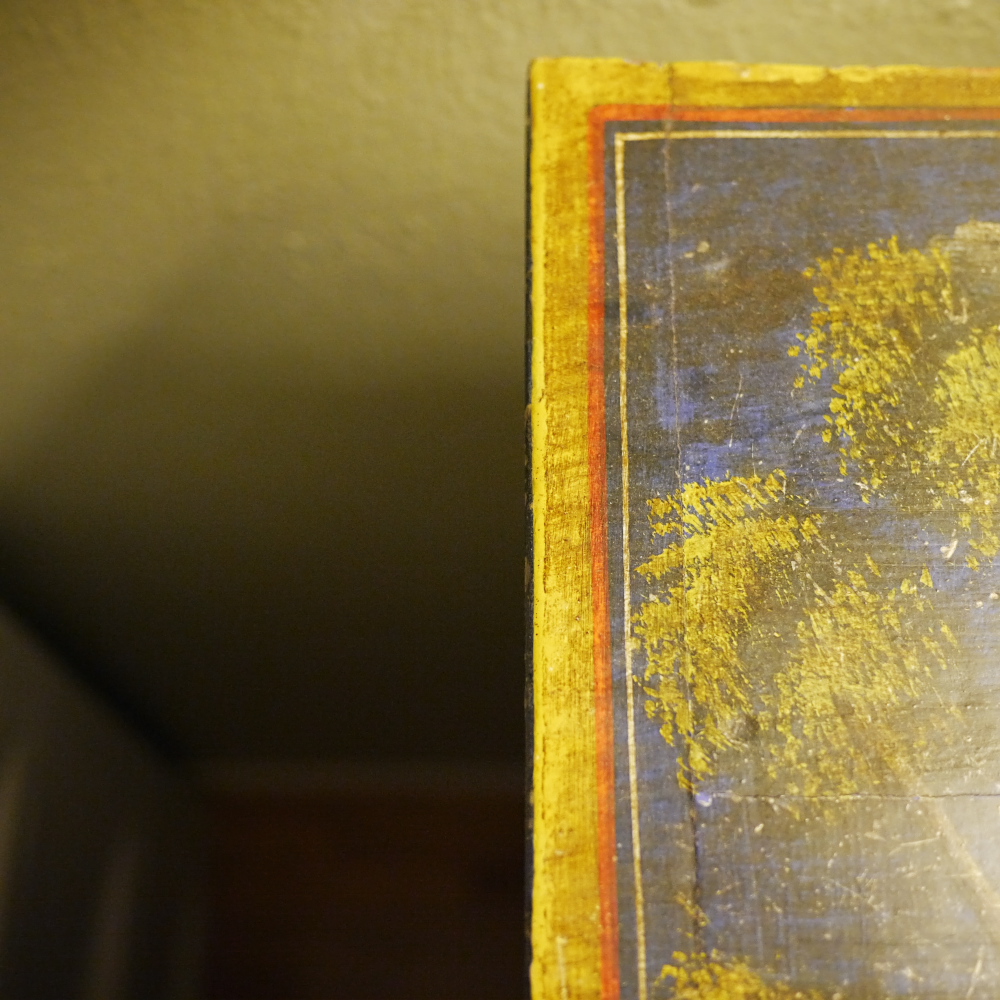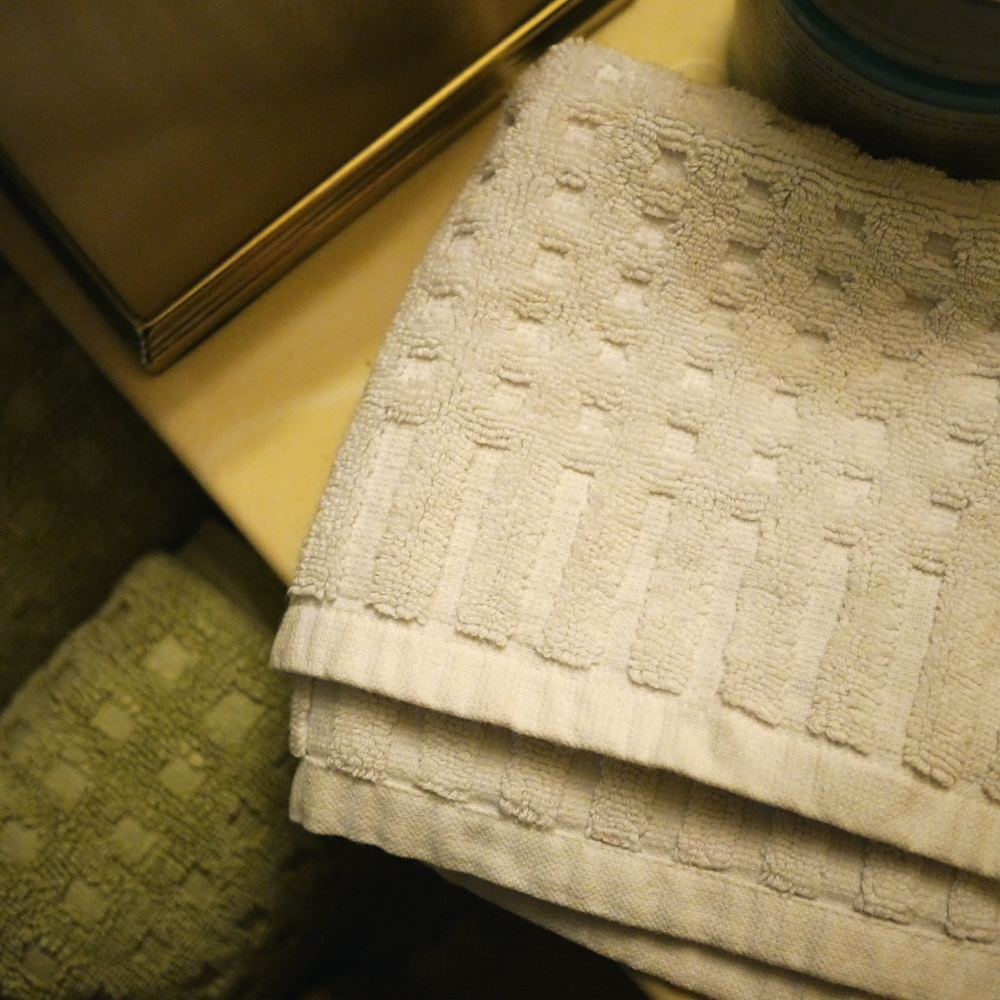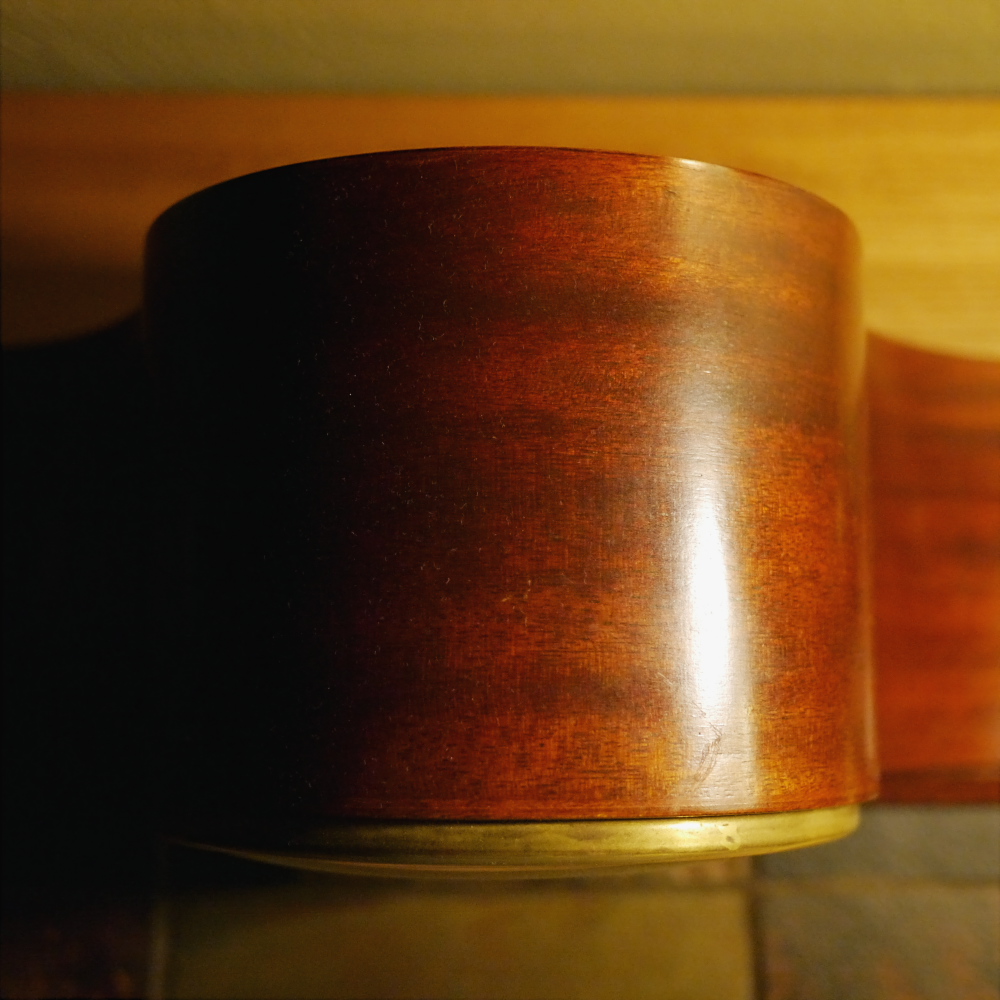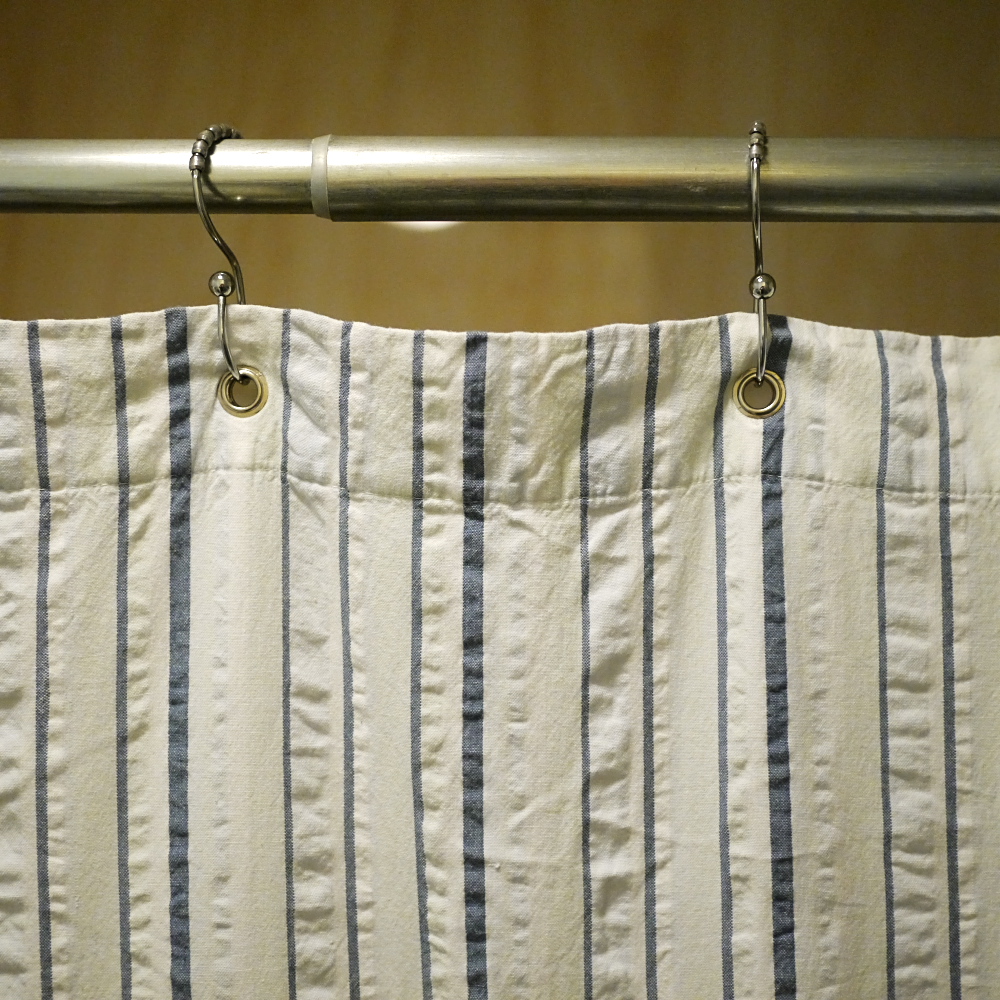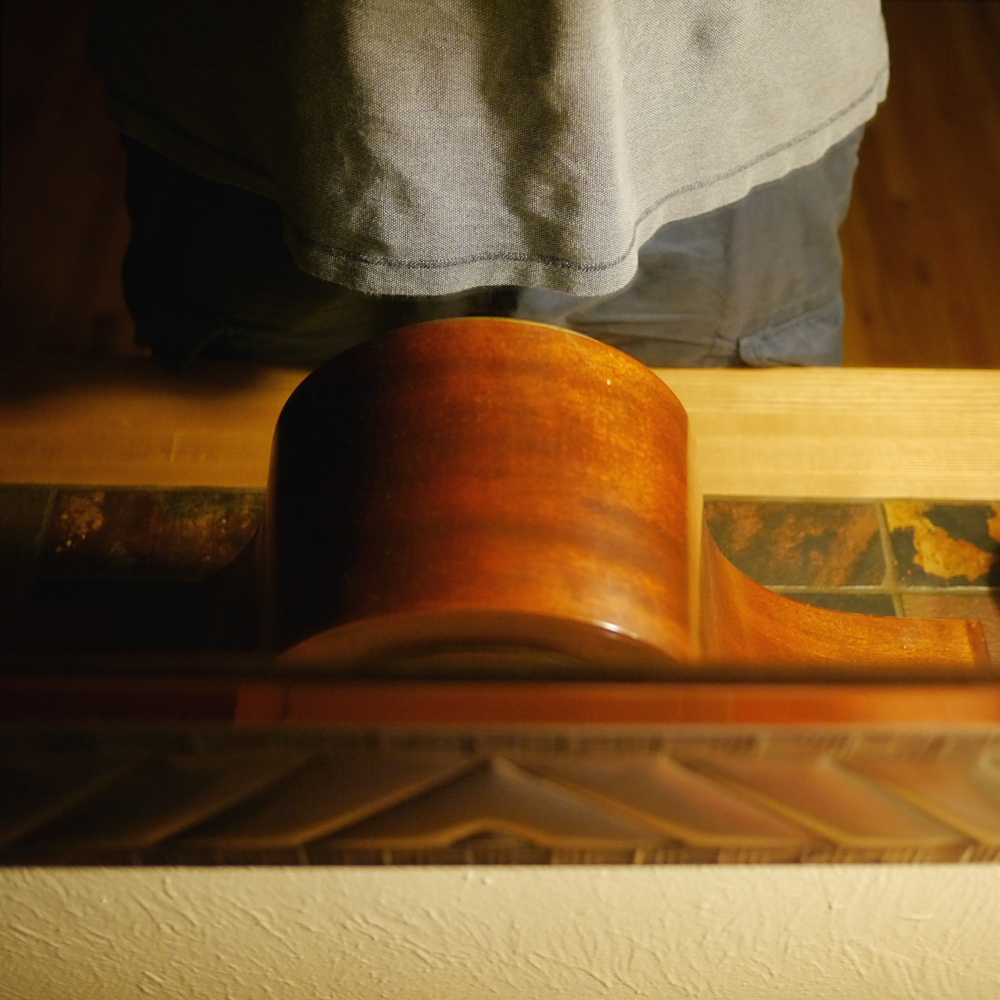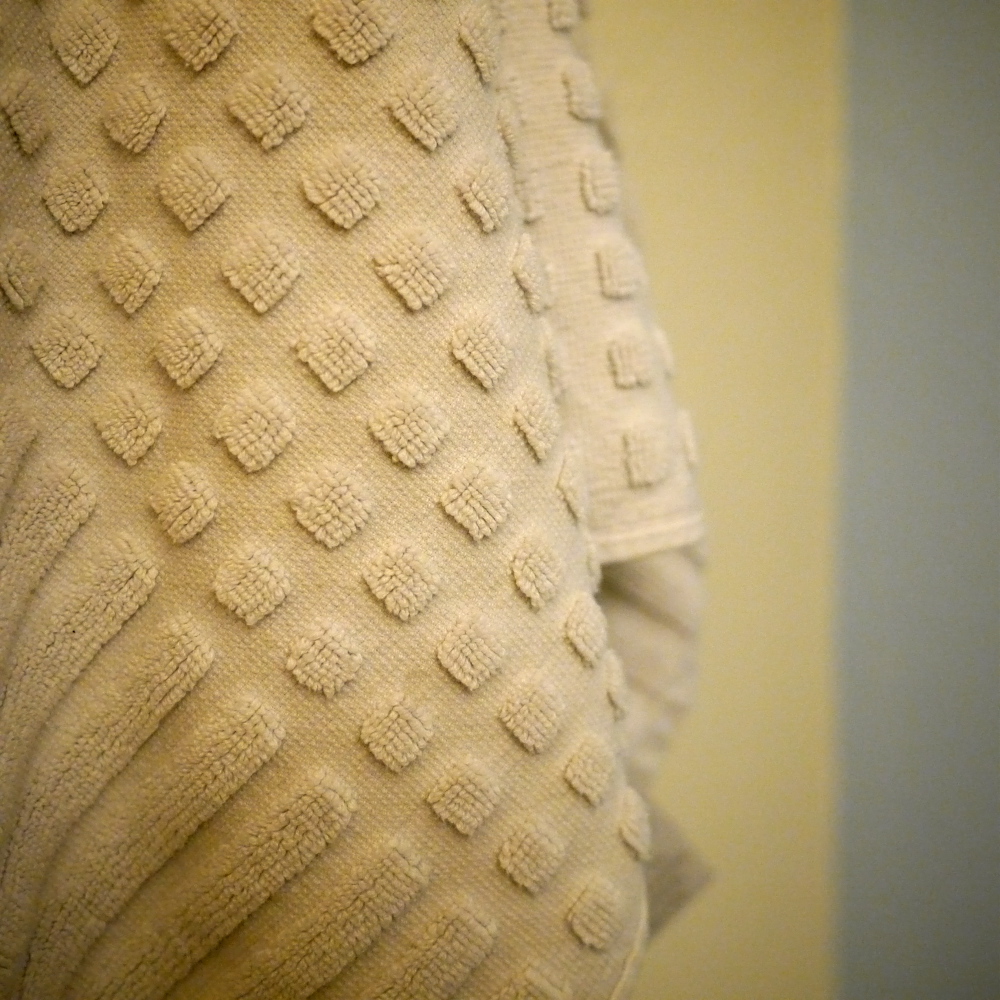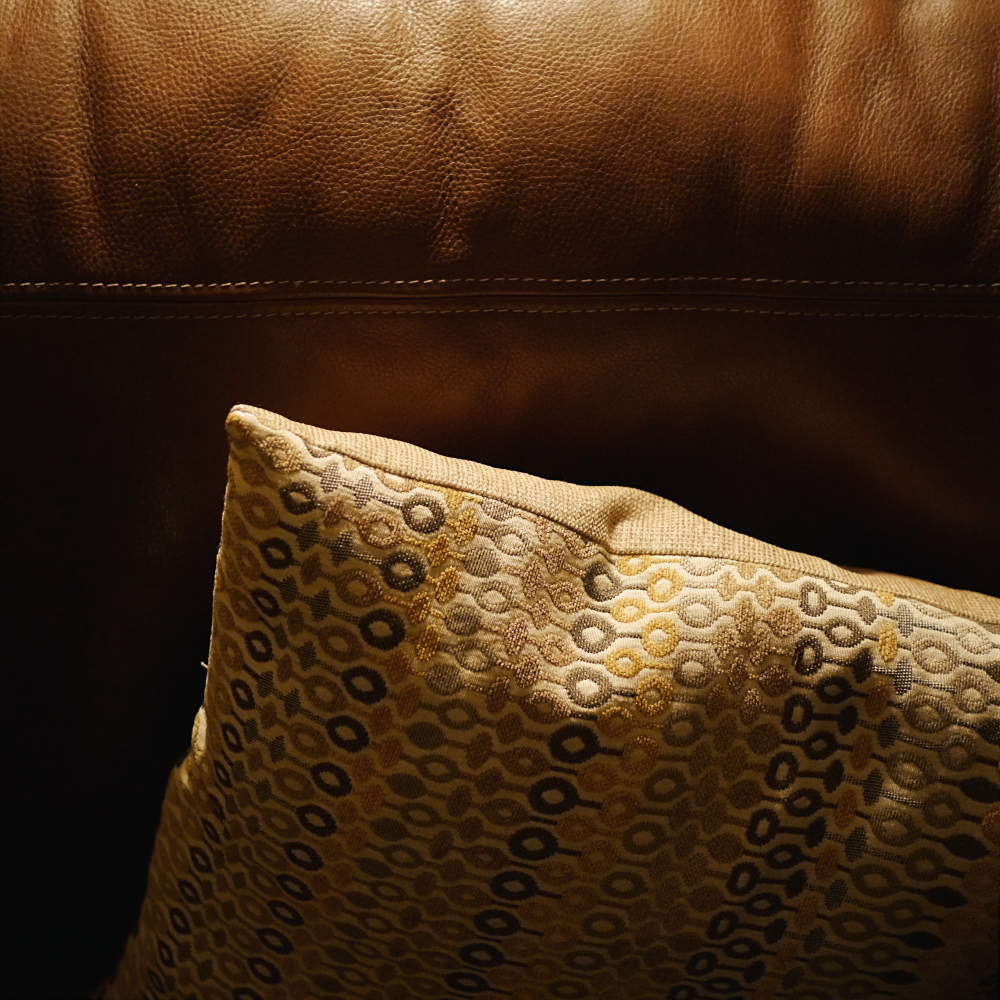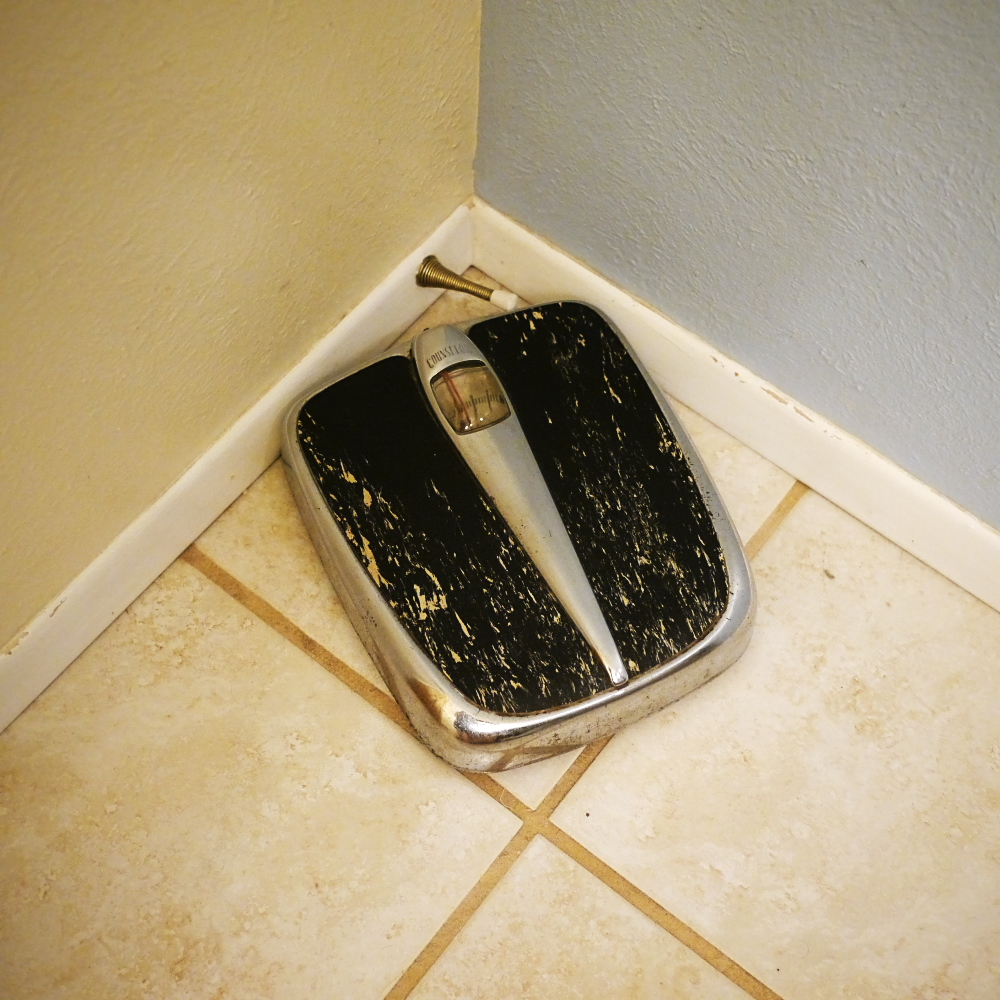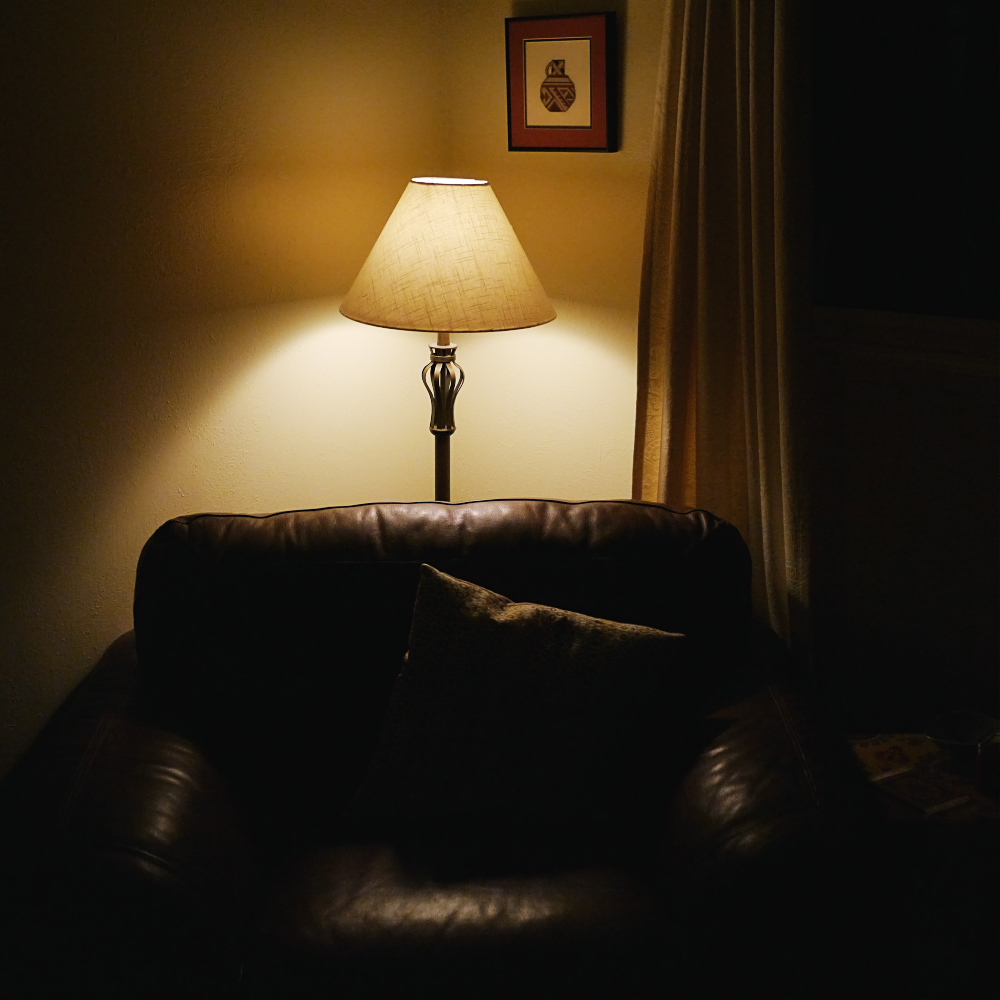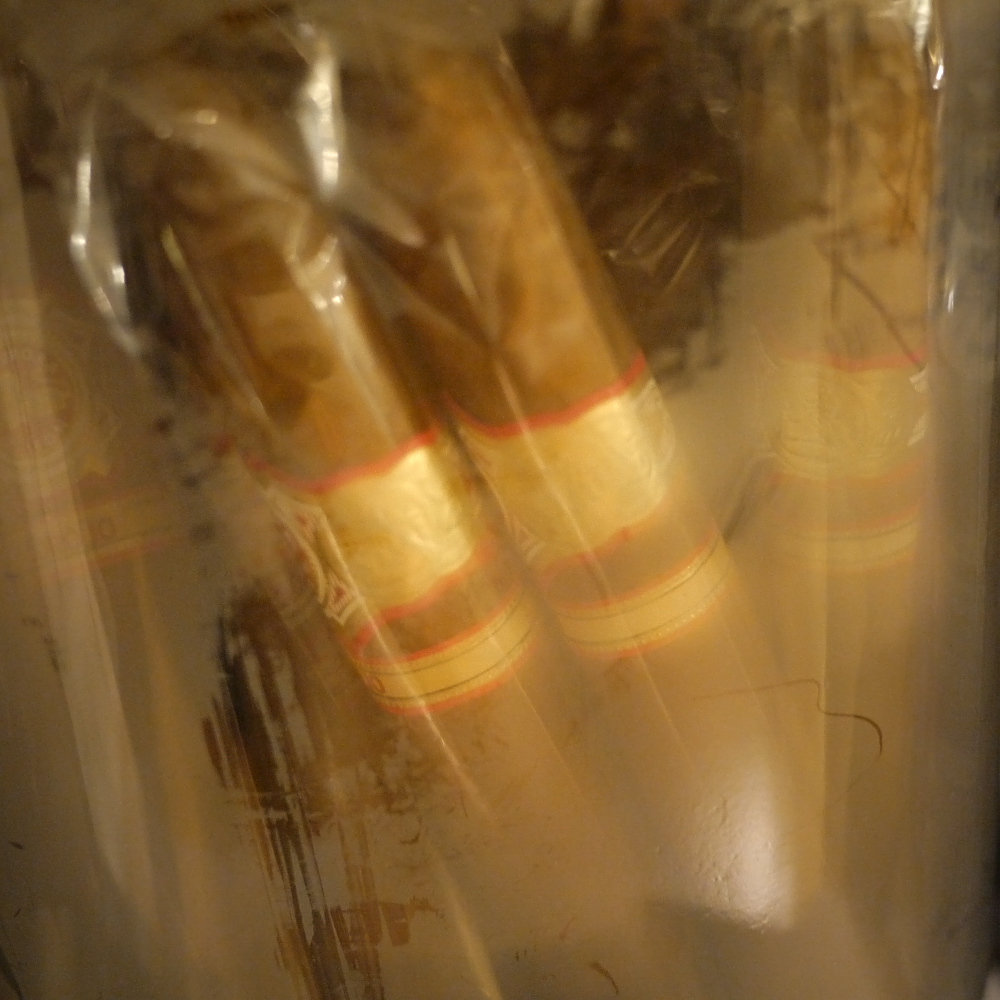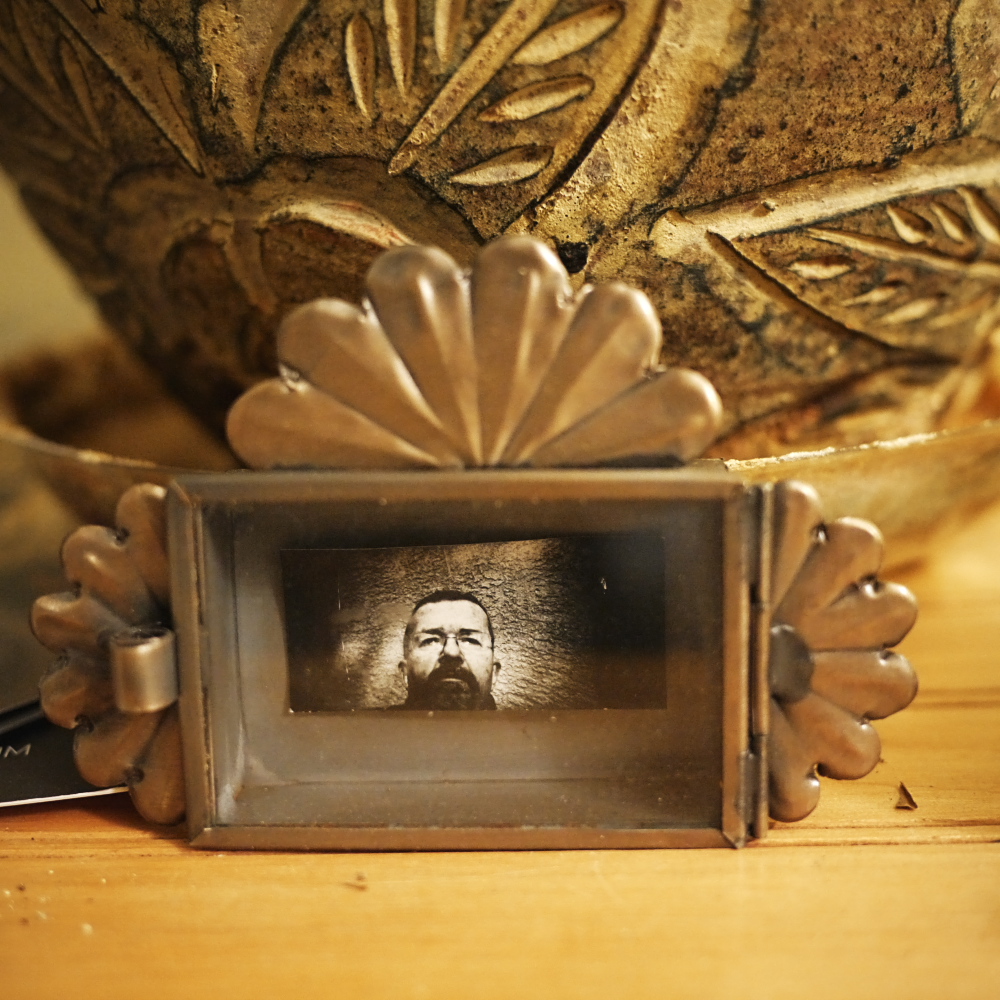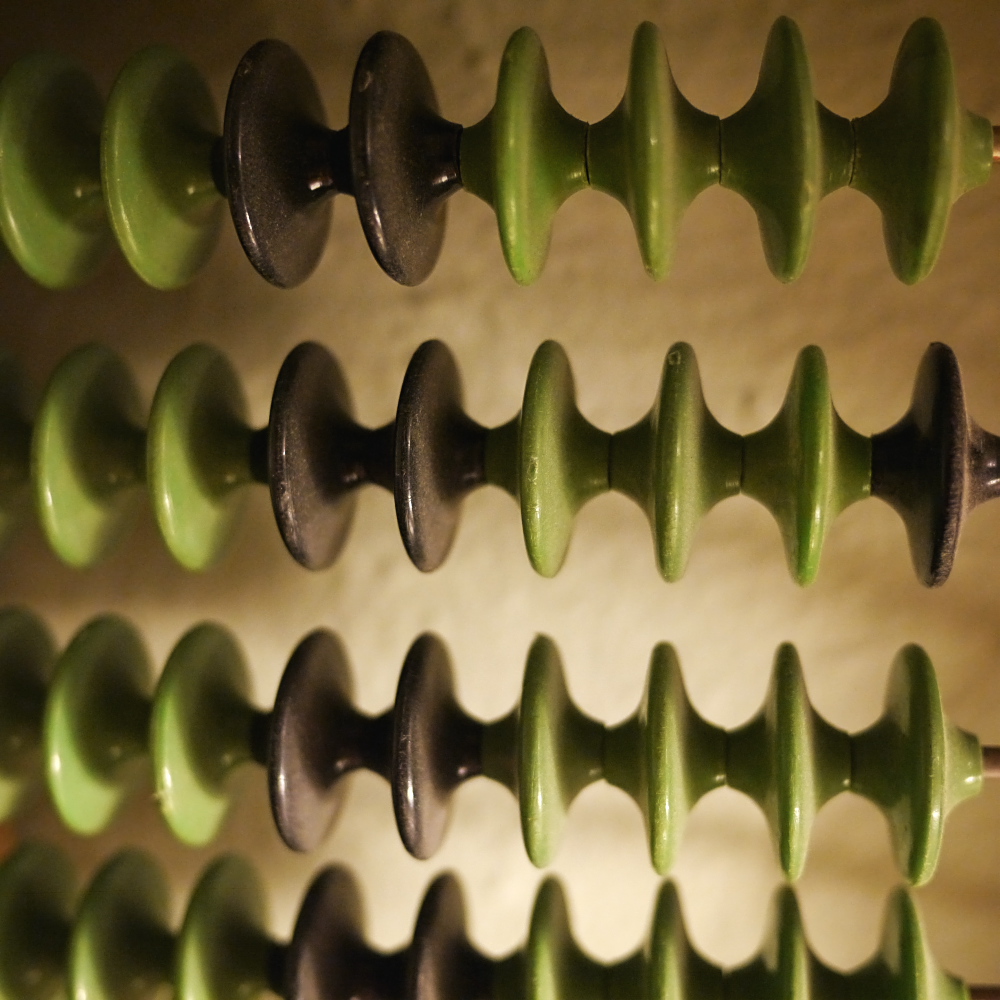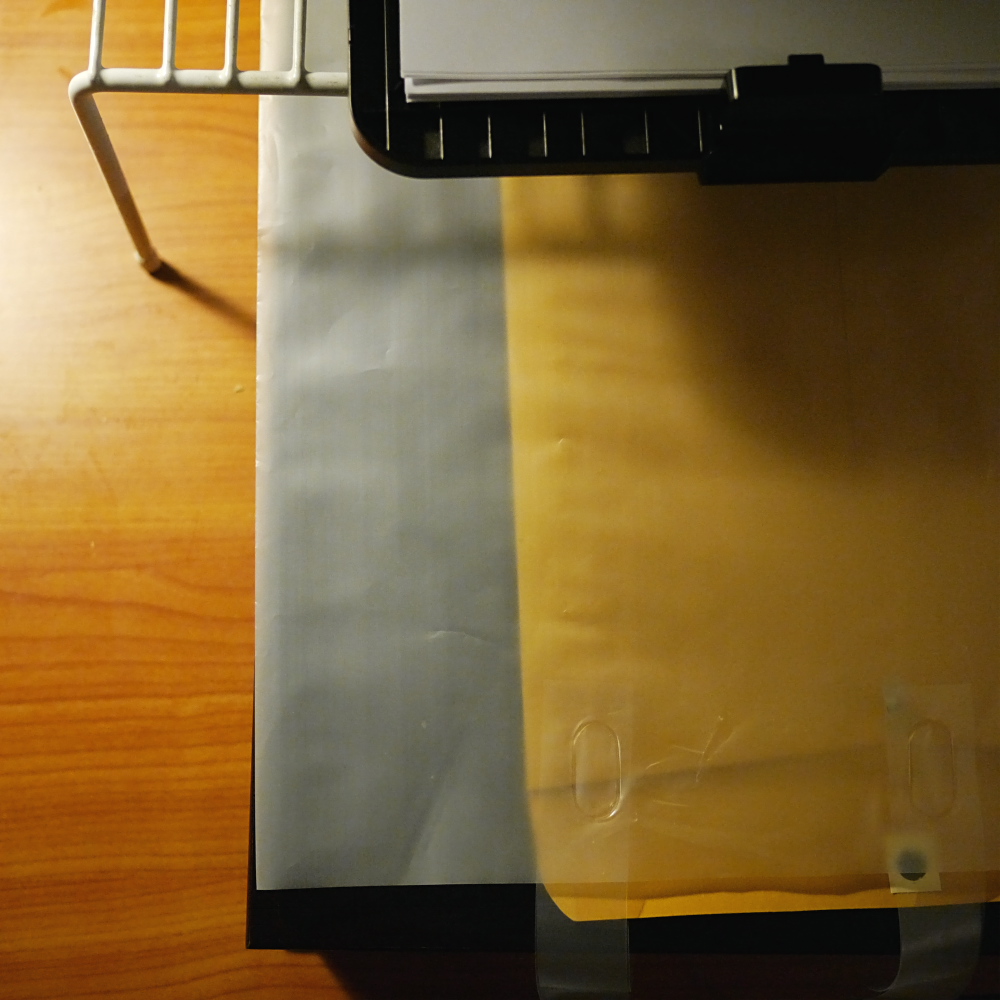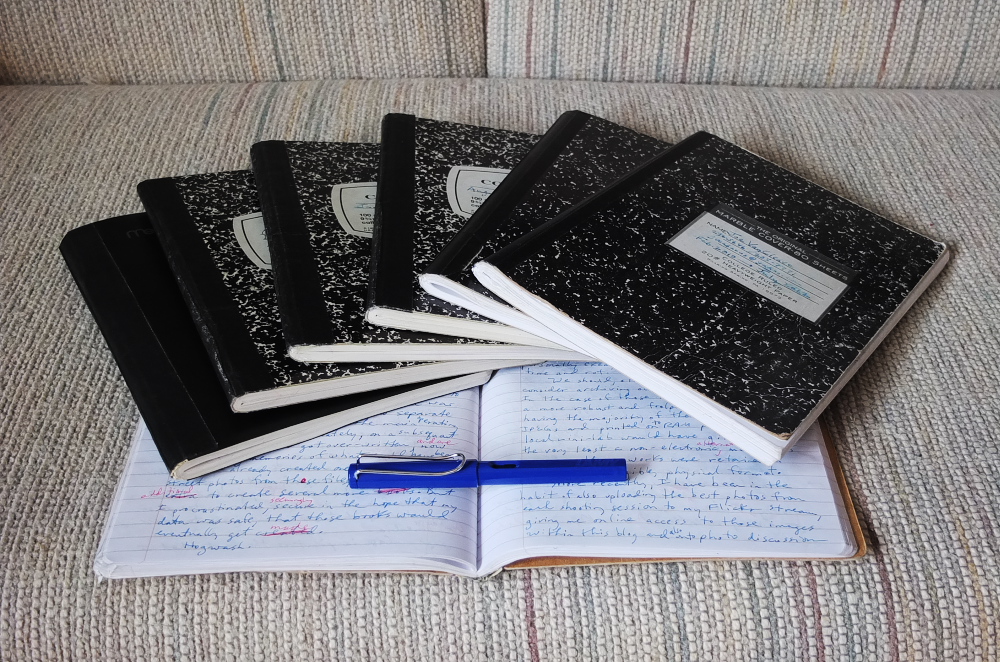
 Post-Script:
Post-Script: One thing I noticed, once beginning this new composition book, it how nice the pen laid down its inky lines on the second page, backed by the stiff cardboard of the front cover. So now I've found a scrap sheet of thin cardboard (from the remnants of a used legal pad), which I've cut down to size to fit inside my new book (including rounded corners), as a combination book marker and backing board.
I've also taken to clipping my three commonly used pens (fountain pen, red ballpoint and blue Bic Crystal) to this sheet of cardboard, which both secures them with the book and provides for easy access. Yes, fixation on one's writing methods is a disease, I've decided.
Speaking of which, we just finished re-watching "The Shining" this last week, and I was reminded of that famous electric Adler typewriter (electric because Jack does a carriage return by pressing a button), which lacks an apparent power cord - imaging having to string a long extension cord across the girth of that enormous room, which he'd have to do "in real life."
All work and no play makes Jack a dull boy.
Typecast via Olympia SM9 De Luxe, photo via Fujifilm X10.
PPS: In case the terms "LAROP" and "BAROP" befuddle you, read
here.
 Olivetti Underwood 21
Olivetti Underwood 21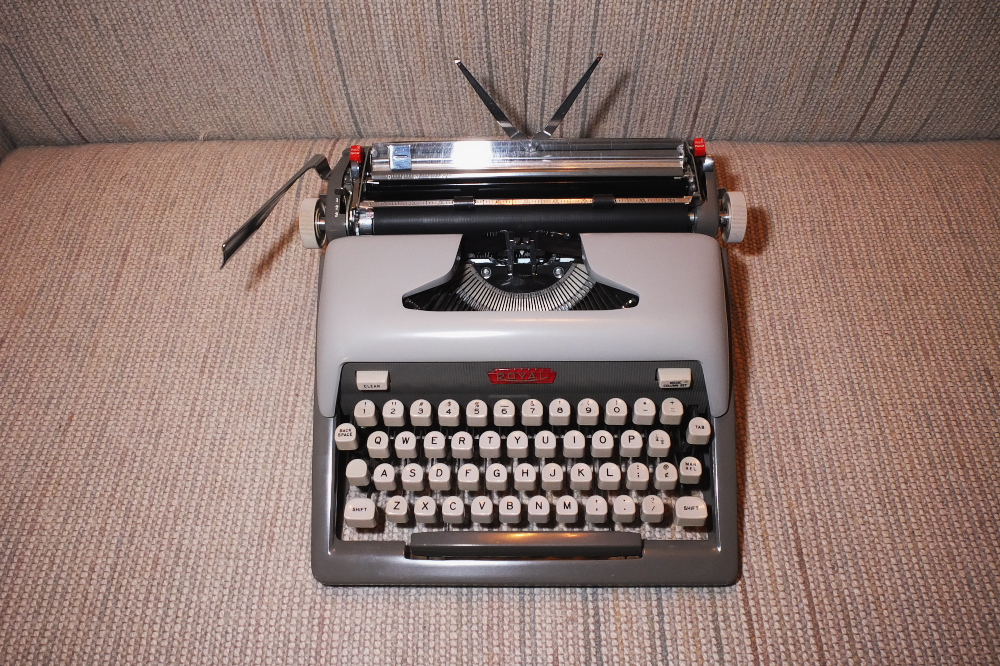 Royal Futura 800
Royal Futura 800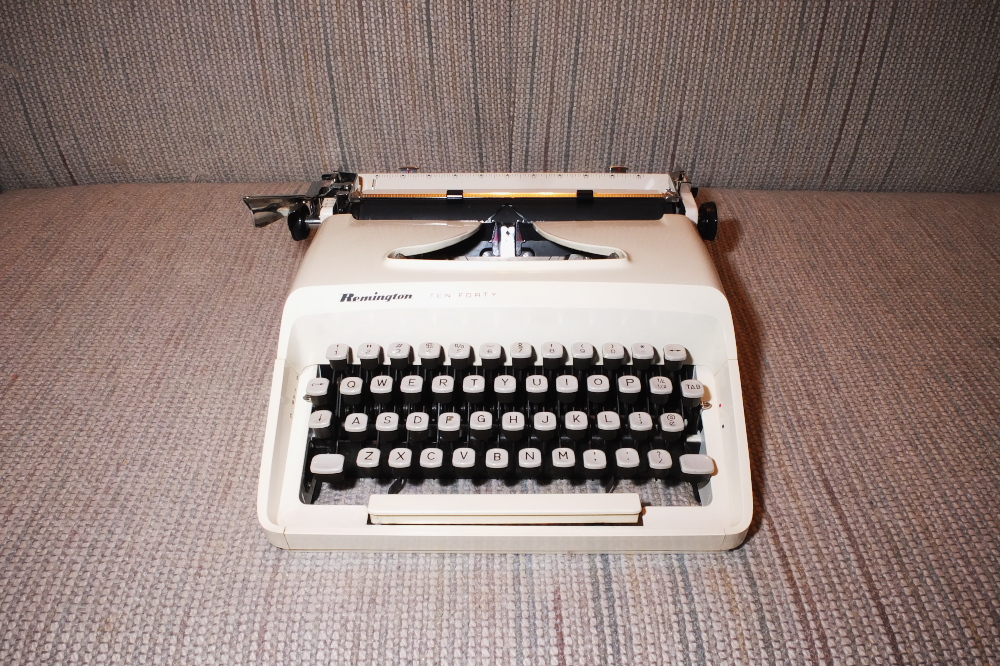 Remington Ten Forty
Remington Ten Forty